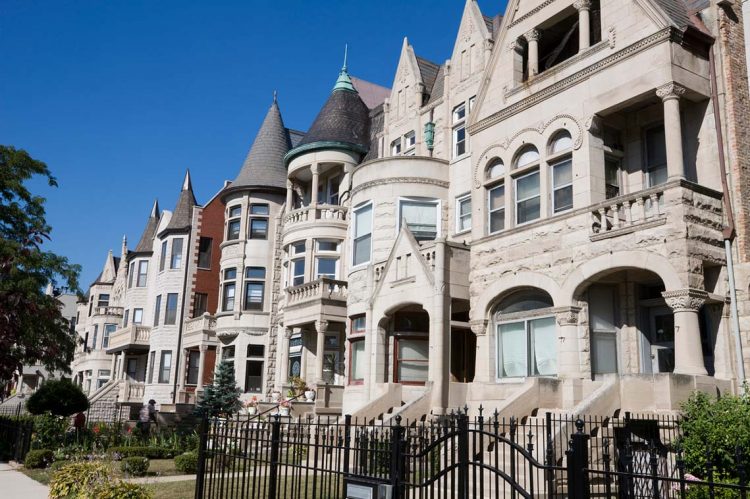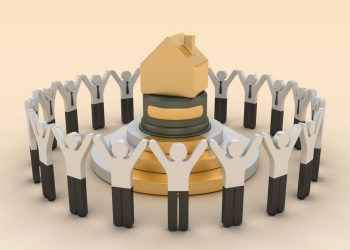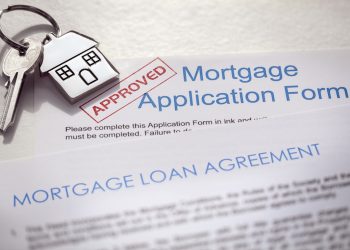Editor’s Note: This is the final part in a three-part series on local innovations focused on affordability and community development. Read part one here and part two here.
Often in the housing industry, people get caught looking up. Expecting the next big thing or the solution to long-standing problems to come from a national think-tank, a big conglomerate or an established thought leader is not misguided—a lot of world-changing ideas do, of course, originate from these spheres. At the same time, it is easy to miss spectacularly innovative new ideas or approaches simply because they come from elsewhere—from small markets, from outsiders and from different disciplines.
As the entire industry buckles under the weight of a long-simmering crisis of both affordability and lack of inventory, it is possible real estate will claw its way back up through methods and approaches already practiced. It is also possible that, high in the upper echelons of the C-suite, experienced executives and academics are concocting the eventual solutions that will address longer-term problems in real estate like the racial homeownership gap, pessimism around affordability, entry-level new home construction and gentrification.
But it is also possible these ideas are germinating at the grass-roots level, driven by innovators who have found new ways to view housing unencumbered by the burdens of convention and preconception, drawing on resources or expertise not endemic to industry thinking. With how local real estate is, it seems even more likely that great change might grow from the bottom up rather than top-down.
Almost always starting small, these ideas have the chance to grow and spark real and foundation change in how we think about housing:
Buy back (and rent) the block
Bonita Harrison is a broker living and working in the West Woodlawn neighborhood on the South Side of Chicago. Like so many who come from tight-knit communities, Harrison says she always has cared deeply about the neighborhood she grew up in, still populated by friends, neighbors and family, and she has worked hard to reinvest there
With how hard it is to find affordable housing, and with how undervalued Black neighborhoods remain after decades of bias and redlining, the challenge of finding ways to create new housing attainable by residents of that neighborhood is never easy. In this case, it required banding together with four other like-minded Black real estate professionals from the area to come up with an innovative path to homeownership.
“When we talk about wealth creation for the Black community, how does that look?” she asks. “We want to make sure we can retain as many people as we can and ensure that their equity position can grow.”
Harrison and the other developers—all experienced brokers owning their own businesses, but working in tandem—came up with a specific way that they could create housing to serve locals. Acquiring a dozen abandoned properties from the local land bank, they designed a three-unit structure that would have similar design elements, all renovated and put together by local Black craftspeople.
The idea, Harrison says, is that a neighborhood resident will be able to qualify for a mortgage using supplemental rental income from the other two units, competing with the “gentrifying population” who often quickly snatch up housing and drive up rents and prices. These new buildings will also add two more quality rental units to the neighborhood, with a landlord living in the same building who (ideally) knows them and understands their needs.
“The government will come in and demolish the houses that you have, blocks and blocks of vacant lots and dilapidated housing,” she says. “What we’re trying to do is fill those vacant lots with properties so that more of the community can come up…and what that does is increase the market value of those properties and bring equity to our community.”
Though this approach—purchasing a property using rental income from another unit—is not a new idea. But having developers who are natural competitors coming together and working hard to keep all the money in their community is unique, according to Harrison. It is especially notable in an area like Woodlawn that is still sunk deep in poverty and neglect, she adds, where morale is low and other developers are not investing.
“When you’re of the community like we are, we see the needs,” she says.
Before Harrison’s group came together, another more established group had seen success at rehabbing and selling homes to Woodlawn residents. Bill Eager, Vice President of Real Estate Development for national non-profit Preservation of Affordable Housing (POAH), led a significant push that renovated and sold 44 homes in Woodlawn at affordable prices, when the market was “softer” than it is now.
POAH’s efforts, which are likely going to be revived to some degree later this year, Eager says, used a mix of local, federal and state grant monies to fix up distressed properties and sell them to residents. They depended on word-of-mouth and local community groups to get the word out. POAH was also able to offer down payment assistance, though with rising home prices Eager says a revival of the program is going to be difficult.
“The biggest obstacle right now is just the sheer cost of developing,” he said. “And construction costs are so high, it’s really hard to bring things in at a level that is kind of affordable for a moderate income household.”
POAH has considered $15,000 to $50,000 for closing cost and downpayment assistance, but Eager admitted that might not be enough in the current housing market.
“I’m not sure how much help $15,000 is going to be right now, but that’s kind of the range we’ve been thinking about,” he says.
Eager says he is aware of the “buy the block” effort by Harrison and the other developers, applauding it even though POAH is not formally involved at this point. That project came together almost spontaneously, with Harrison saying she only knew the other developers informally before this recent collaboration.
“We would see each other in Home Depot, we would see each other in passing,” she remembers.
An initial conversation helped them all understand how much of an impact they individually had all made on the area, Harrison adds, and after that the need to work together seemed obvious.
“If we concentrate our impact, it would make more sense…we made it cohesive, we’re going to go out and spread,” Harrison explains.
She describes just how powerful this effort is in changing the trajectory of a neighborhood, raising property values across the board and really changing the attitude, perception and habits of people who live and work there. Designing the buildings with similar aesthetics, and placing them strategically can rapidly accelerate the kind of positive change the developers hope to create, she says.
In fact, Harrison says other developers have approached her since the project was announced, and there is a “Phase 2” in the works which includes the nearby commercial corridor—something that will become very important as more people become upwardly mobile in the area. She says they have also been in touch with local government officials, with the most urgent need being “affordable capital” to expand the effort.
“We are okay with doing it ourselves, but give us some access to capital that we can utilize, makes sense for the project,” Harrison asks.
But it is really that sense of community, Harrison emphasizes, that makes this project both unique and attainable—something she hopes is replicated in other areas of the country by folks who come to understand that cooperation and understanding can truly make a difference for a neighborhood.
“We’re going through our network and saying, ‘Hey, let’s do this ourselves,’” she says. ‘We really want to be able to do it ourselves, just because of what it means for us, and what it means for the culture and the community.”











